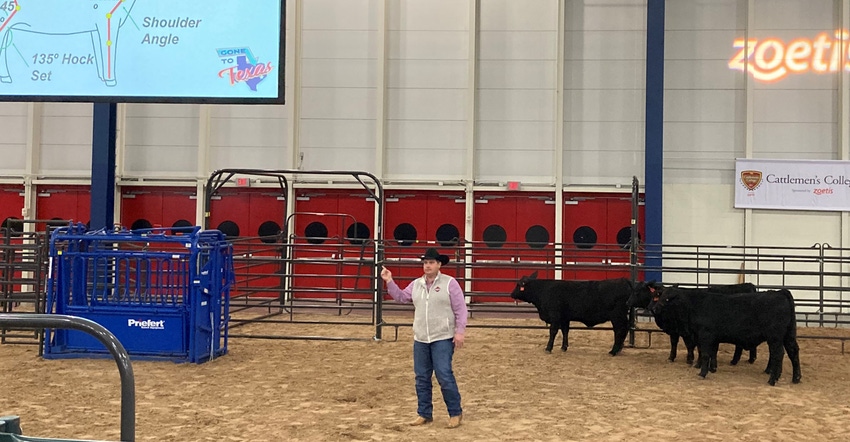Use genetic tools and sound structure evaluation to build your cow herd’s longevity.

That great herald of spring has arrived — a mailbox full of production sale catalogs.
Cattle producers dog-ear pages of stock they plan to bid on, making critical decisions to bring genetics into their herds, and they typically fall into two camps. Some focus on the numbers, or expected progeny differences, of a bull or a replacement female. Others make their decisions based solely on phenotype.
But balancing genetics and phenotype and understanding emerging genetic predictors can help producers build better cattle herds.
That was the focus of a presentation by Shane Bedwell and Bob Weaber at the 2022 Cattlemen’s College Jan. 31 in Houston. Bedwell is the chief operating officer and director of breed improvement for the American Hereford Association, and Weaber is a professor at Kansas State University.
Bedwell said the industry has made tremendous strides to collect and use data on cattle, from EPDs to genomic technology. “But we can’t walk away from structure,” he said. “We need cattle that are sound and resilient and can hold up.” That bull or cow may have great numbers, Bedwell said, but if it is post-legged or its feet aren’t good, longevity in the herd is greatly reduced.
Feet and leg traits
Weaber said work is ongoing into further developing genetic improvement tools for feet and leg traits. This makes sense for the welfare of the animal, as well as the economics of the cattle herd. Cattle that have poor feet and leg structure exit the production chain early because of lameness issues, and that costs money and isn’t being a good steward of the animals in our care, Weaber said.
“There are fewer things more economically important on a cow-calf operation than cow longevity,” Weaber said.
The good news is that improved technology and data gathering have given researchers the ability to calculate EPDs to help select sires that can improve feet and leg qualities, Weaber said, along with traits for docility, teat and udder score, and more.
The Australian Angus Association was a pioneer in this space, Weaber said, and found that feet and leg traits have high heritability. The higher the heritability, the greater the proportion of variability that is under genetic control, he explained. The Australian work found that traits such as front feet angle and rear feet claw set had higher heritability than traits for weaning weight or others that cattle producers commonly use in their selection criteria.
Further research
A K-State research project conducted with help from the Red Angus Association of America and the American Simmental Association built on this work and evaluated multiple foot and leg traits in nearly 2,000 head of cattle.
The goal was to find a genetic relationship among hoof, leg and limb angulation attributes. If producers can learn to better evaluate hoof traits, that can invariably help them evaluate for leg traits that could lead to lameness in the animal.
According to the ASA, three traits were identified that can help producers make better selection decisions:
claw set and divergence
hoof angle and heel
hock angle or rear leg side view
The claw set is important because if a claw incorrectly grows, it can harm the base of the hoof and provide an opening for foot rot to take hold. Or, if the situation is severe enough, it can shorten the cow’s stride and make movement painful.
Hoof angle and heel depth refer to toes that grow outward or lengthen. Too much and you have a rigid hoof and pastern angle that limits flexibility. And cattle that have extremely straight hock and rear leg sets are also limited in their mobility.
Ultimately, Bedwell said, cattle producers need to shift away from the extremes when they’re making their selection decisions and use the genetic tools available to them, as well as the fundamentals of evaluating cattle structure.
About the Author(s)
You May Also Like



.png?width=300&auto=webp&quality=80&disable=upscale)
.png?width=300&auto=webp&quality=80&disable=upscale)
